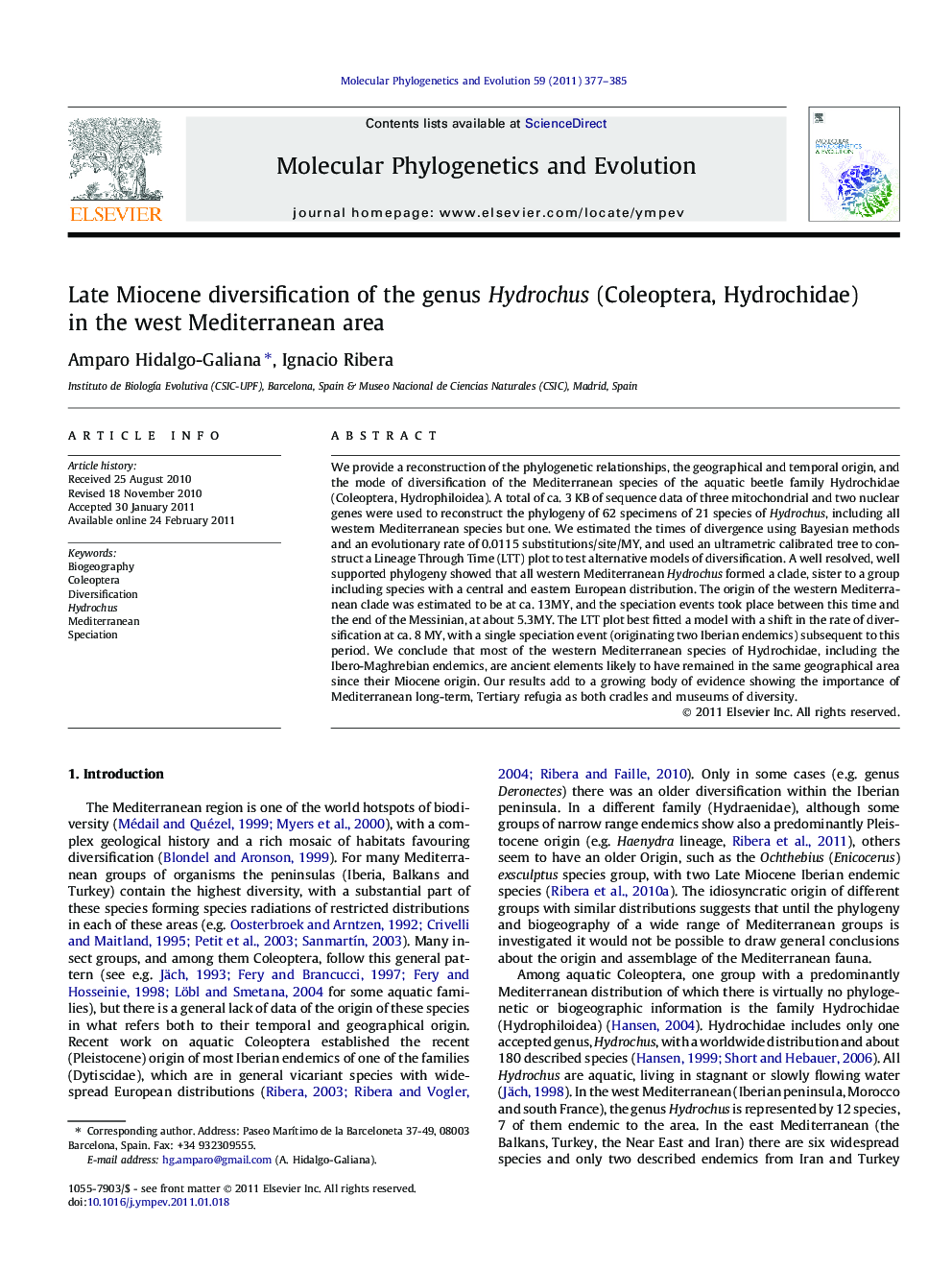| کد مقاله | کد نشریه | سال انتشار | مقاله انگلیسی | نسخه تمام متن |
|---|---|---|---|---|
| 2834214 | 1164299 | 2011 | 9 صفحه PDF | دانلود رایگان |

We provide a reconstruction of the phylogenetic relationships, the geographical and temporal origin, and the mode of diversification of the Mediterranean species of the aquatic beetle family Hydrochidae (Coleoptera, Hydrophiloidea). A total of ca. 3 KB of sequence data of three mitochondrial and two nuclear genes were used to reconstruct the phylogeny of 62 specimens of 21 species of Hydrochus, including all western Mediterranean species but one. We estimated the times of divergence using Bayesian methods and an evolutionary rate of 0.0115 substitutions/site/MY, and used an ultrametric calibrated tree to construct a Lineage Through Time (LTT) plot to test alternative models of diversification. A well resolved, well supported phylogeny showed that all western Mediterranean Hydrochus formed a clade, sister to a group including species with a central and eastern European distribution. The origin of the western Mediterranean clade was estimated to be at ca. 13MY, and the speciation events took place between this time and the end of the Messinian, at about 5.3MY. The LTT plot best fitted a model with a shift in the rate of diversification at ca. 8 MY, with a single speciation event (originating two Iberian endemics) subsequent to this period. We conclude that most of the western Mediterranean species of Hydrochidae, including the Ibero-Maghrebian endemics, are ancient elements likely to have remained in the same geographical area since their Miocene origin. Our results add to a growing body of evidence showing the importance of Mediterranean long-term, Tertiary refugia as both cradles and museums of diversity.
Figure optionsDownload as PowerPoint slideHighlights
► The western Mediterranean species of Hydrochus form a monophyletic clade.
► The western Mediterranean Hydrochus are more diverse than the eastern clade.
► The main diversification was in the Miocene, with a stasis in speciation since 8 Mya.
► The west Mediterranean diversification peak coincides with an instable tectonic period.
Journal: Molecular Phylogenetics and Evolution - Volume 59, Issue 2, May 2011, Pages 377–385